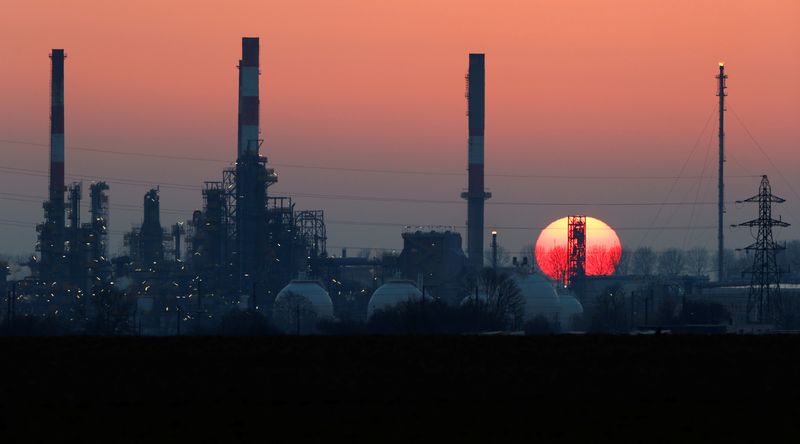By Georgina McCartney
HOUSTON (Reuters) -Oil prices rose for a third consecutive day on Wednesday, boosted by a larger-than-expected fall in U.S. fuel stocks, and rising tensions in the Middle East.
Brent crude futures settled 62 cents higher, or 0.79% at $79.21 a barrel as of 2:40 pm ET (1940 GMT). U.S. West Texas Intermediate crude climbed 55 cents, or 0.75% to $73.86.
U.S. gasoline stocks fell by 3.15 million barrels last week compared with analysts' estimates for a build of 140,000 barrels, according to the U.S. Energy Information Administration (EIA). Distillate stocks fell 3.2 million barrels, compared with estimates for a 1 million barrel draw.
Crude stocks, however, posted a larger-than-expected build of 5.5 million barrels as production recovered after a cold snap, while U.S. refiners stepped up maintenance. Analysts had estimated a smaller build of 1.9 million barrels.
"This is the kind of report you would expect out of the post freeze-in with refineries not in any hurry to come back," Bob Yawger, director of energy futures at Mizuho Bank.
Refinery utilization shrank 0.5% to 82.4%. On the U.S. Gulf Coast, the deep freeze knocked off 15% of refining capacity, pressuring utilization rates to their lowest level since September 2021, according to EIA data.
On the supply side, the EIA cut its 2024 outlook for domestic oil output growth on Tuesday, putting it far lower than the 2023 increase and predicting it would not reach December 2023's record levels until February 2025.
As ever, the market is keeping an eye on developments in the Middle East.
Israeli Prime Minister Benjamin Netanyahu said total victory in Gaza was within reach, rejecting the latest offer from Hamas for a ceasefire to ensure the return of hostages still held in the besieged enclave.
The remarks dismissing the latest offer by Hamas for a ceasefire in Gaza show he intends to pursue conflict in the Middle East, senior Hamas official Sami Abu Zuhri told Reuters.
Traders are also tracking the Iranian-backed Houthi rebels' attacks on shipping in the Red Sea (NYSE:SE) that have disrupted traffic through the Suez Canal, the fastest sea route between Asia and Europe and one that carries nearly 12% of global trade.
Elsewhere, Federal Reserve Bank of Boston President Susan Collins said if the economy met her expectations the central bank will likely be able to lower rates at some point later this year, potentially lending support to crude futures.
"There is confusion in the markets from mixed signals out of the Federal Reserve ... they are now waiting too long to ease, adding an additional element of risk back into the market," said Timothy Snyder, economist at Matador.

In the longer term, the International Energy Agency (IEA) said India is expected to be the largest driver of global oil demand growth between 2023 and 2030, narrowly taking the lead from top importer China.
That comes as struggling large economies, including China's, dent confidence in the global oil demand outlook.